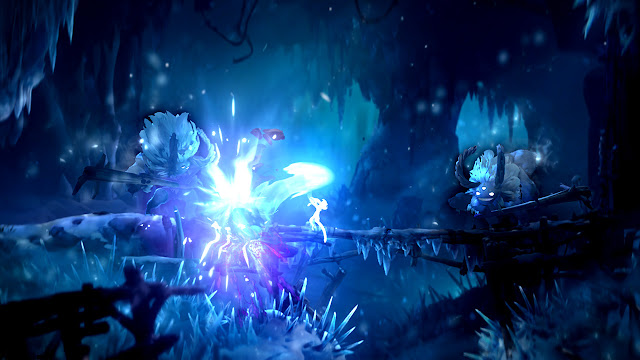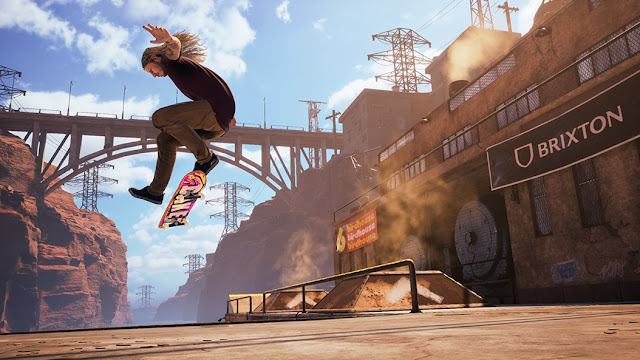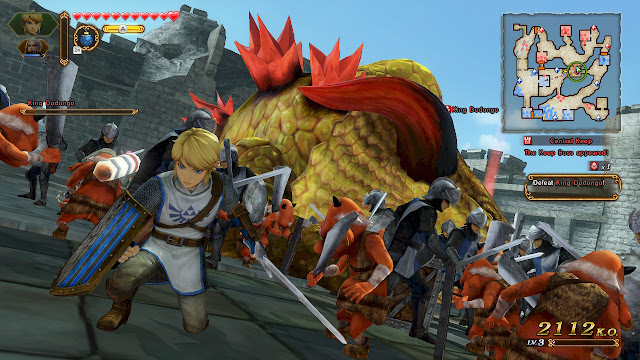Earlier this year, SPC took a look at the Nintendo Switch version of Ori and the Blind Forest: Definitive Edition. Now, we're deeper into the nightmare that is 2020, but we have some brightness shining through in an excellent sequel to the original Ori with Ori and the Will of the Wisps. (Hey, we'll take whatever brightness we can get this year, right?) Here's the SPC review.
When there's a will, there's a wisp
September 2019 saw a game announcement quite surprising to a lot of the gaming world: An Xbox Game Studios title that wasn't associated with the Minecraft brand was going to launch on the Nintendo Switch. This game title was none other than Ori and the Blind Forest from Moon Studios. Now, a year later, the game's sequel is available on Nintendo's hybrid platform, less than a year after the original Xbox One release. Ori and the Will of the Wisps offers multiple improvements over its predecessor, and is just as much of a worthwhile game to play--perhaps even more so!
Ori and the Will of the Wisps is just as heartfelt and emotional of a journey as its predecessor, Ori and the Blind Forest. The story sees Ori and his family assisting with raising Ku, a baby owl, in its formative years. We see them teaching Ku how to forage for food and things like that throughout the seasons, with Ku's most desired lesson to learn being flight. One day, Ku finally is able to fly, and Ori, riding on Ku's back, take an extended flight over a new land. When a thunderstorm strikes, the two are suddenly separated, and now it's up to Ori to reunite with Ku before anything bad happens. The story is touching, but it's the minute-to-minute moments that truly shine and tug at the heart.
Compared to Ori and the Blind Forest: Definitive Edition, the indomitable spirit Ori has plenty of new tools in his bag of tricks on his new adventure in parts unknown. One such trick is a blade of spirit energy that he can use as a sword to attack enemies much more directly than in his previous game. As the game progresses, Ori discovers several new abilities from various spirit trees sprinkled throughout the land that bestow him several powers old and new.
 |
| Ori leaps into action for this spirit's second adventure! |
One of the coolest means of traversal in Ori and the Blind Forest that carries over to Ori and the Will of the Wisps is that of the Bash attack. It allows Ori to sling into enemies directly, or to bounce off of their bodies to reach new areas. In addition to enemies, Ori can also bash directly off enemy projectiles, either sending them flying back into foes or using them to reach higher heights and new portions of the map as well.
 |
| Ori has more offensive capabilities this time around in Will of the Wisps. It's a good thing, too, because Ori will definitely need them to survive! |
New to this Ori sequel is that of Shards. Shards serve similarly to the Charms of Hollow Knight, where they can be equipped in one of a handful of slots in Ori's possession, which can be upgraded by visiting and completing Combat Shrines. The latter are short endurance battles with multiple rounds where the goal is to defeat every enemy in sight at your leisure while surviving the onslaught. Regardless, back to Shards, they have numerous effects to them--some grant Ori the ability to collect Spirit Light from half a screen away instead of needing to be nearby to pick them up, while others boost his damage output while also lowering his defense. Unlike the aforementioned Charms of Hollow Knight, however, Shards in Ori and the Will of the Wisps can be upgraded with the game's main currency, bestowing even bigger bonuses when they're equipped.
 |
| Ori and the Will of the Wisps features ample opportunities for good old fashioned platforming fun. |
Shards aren't the only thing new to Ori and the Will of the Wisps when compared to its predecessor. There are an abundance of side quests to take on in the game, with a major one being restoring a town to not just its former glory, but bigger and better than ever before. This is done by collecting special ore around the game's map, and returning it to an NPC in the town to start construction work. Alongside the town, there is one particularly enjoyable trading sequence a la The Legend of Zelda: Link's Awakening (no, that game didn't hardly invent the trading quest, but it's my go-to game example) that unlocks an incredibly helpful item to assist players who wish to fully complete Will of the Wisps at 100%.
The final new addition to freshen the experience over Ori and the Blind Forest is that of Spirit Trials. These are time trial races against the AI that reward Spirit Light currency for completing them. They demand repetition and multiple attempts usually to master the routes required and complete them fast enough to beat the ghosts in time. After you clear a Spirit Trial, you can upload your own time to a leaderboard and compete against other players this way. The reward of Spirit Light for clearing a trial is very much a nice one, as otherwise the process to grind to upgrade Shards would be a more tedious one.
So, I've spoken about what is new to Ori and the Will of the Wisps--and these additions to the familiar Metroidvania formula are mostly well executed and welcomed--but there are some parts of the game that followed the old adage "if it ain't broke don't fix it". However, in some cases like Will of the Wisps' chase sequences, a part of the original Ori that I took issue with, this adage doesn't quite hold up.
The chase sequences in Ori and the Blind Forest featured Ori being chased by some kind of environmental danger, whether it was a flood or rising lava. In Will of the Wisps, Ori gets chased by more than just the environment, including huge, hulking bosses. This isn't so bad. What is less than satisfying is that just like Blind Forest, the chase sequences demand split-second precision and timing, little-to-no room for player error, and sometimes it just feels like you need luck to get through them issue-free if you wish to be successful on your first run. These are just as trial-and-error as in the original game, and without checkpoints in many of these sequences, they become quite annoying, despite how epic and amazing they are to play most of the time.
 |
| "I spy with my eight eyes, something in my den that doesn't belong." |
Ori and the Will of the Wisps had a difficult time running on the Nintendo Switch at launch. It was plagued with reported hard crashes, which put me off from playing the game until they were addressed. Fortunately, they have been addressed and addressed well. In my nearly 15 hours of playing the game, I never encountered a crash at all. (Of course, I'm knocking on wood that I didn't just jinx myself if I were ever to return to the game anytime soon.) That said, I did encounter a loading issue with Will of the Wisps on multiple occasions. It would happen when moving Ori at a speed that was apparently too fast for the game to handle. Ori would get caught on the edge of the screen, and I'd have to wait a few seconds for the game to load the next "screen" of sorts. Very off-putting. Furthermore, speaking of loading, the initial loading time for Ori and the Will of the Wisps is also off-putting, taking at least a minute to load the title screen. I was reminded of the early PlayStation 2 days here, and these were not happy, nostalgic memories for me, either.
 |
| The Luma Pools was visually my favorite section of Ori and the Will of the Wisps. |
All that notwithstanding, Ori and the Will of the Wisps is a gorgeous game with so much vibrant color, insanely detailed backdrops and foregrounds, amazing set pieces, and jaw-dropping destinations and locales that it's easy to forgive a lot of these aforementioned technical problems. Plus, if the Nintendo Switch version's crashes can be properly addressed, then no doubt the issues I encountered will eventually also be ironed out. Then, there's Gareth Coker's sensational symphonic score, somehow surpassing his work in the previous Ori. That's no small task, to be sure, and the music accentuated my joy playing this astounding game.
Ori and the Will of the Wisps suffers from some small technical issues on the Nintendo Switch version, and my issues with the series' chase sequences continues with this sequel. However, building off the strong foundation of the original Ori, Moon Studios has managed to craft an even bigger, better, and bolder sequel with Ori and the Will of the Wisps, telling a touching tale while making a marvelous Metroidvania in the process.
[SPC Says: A-]






























